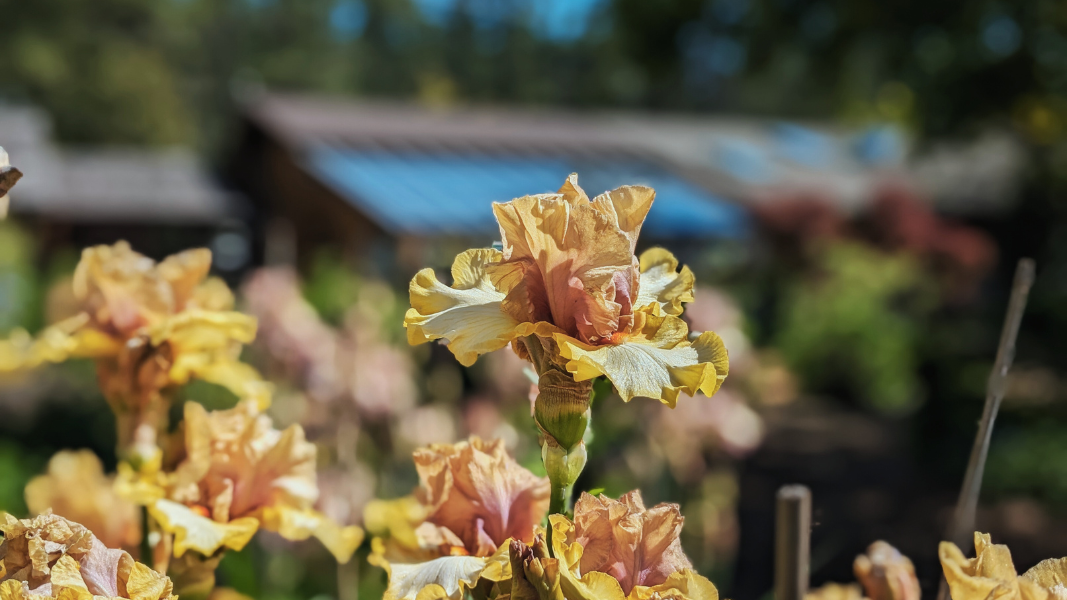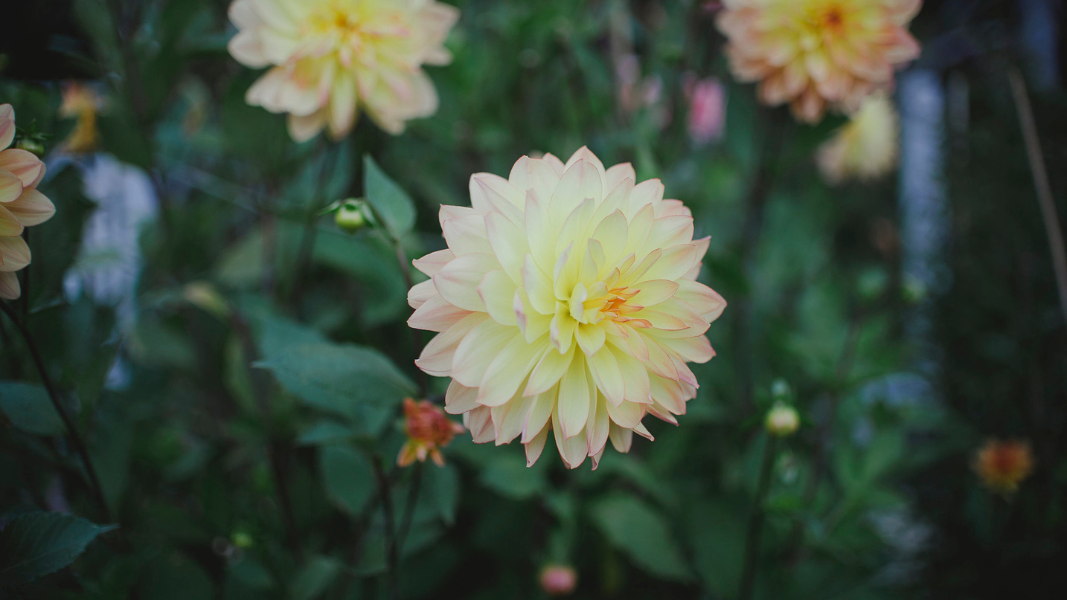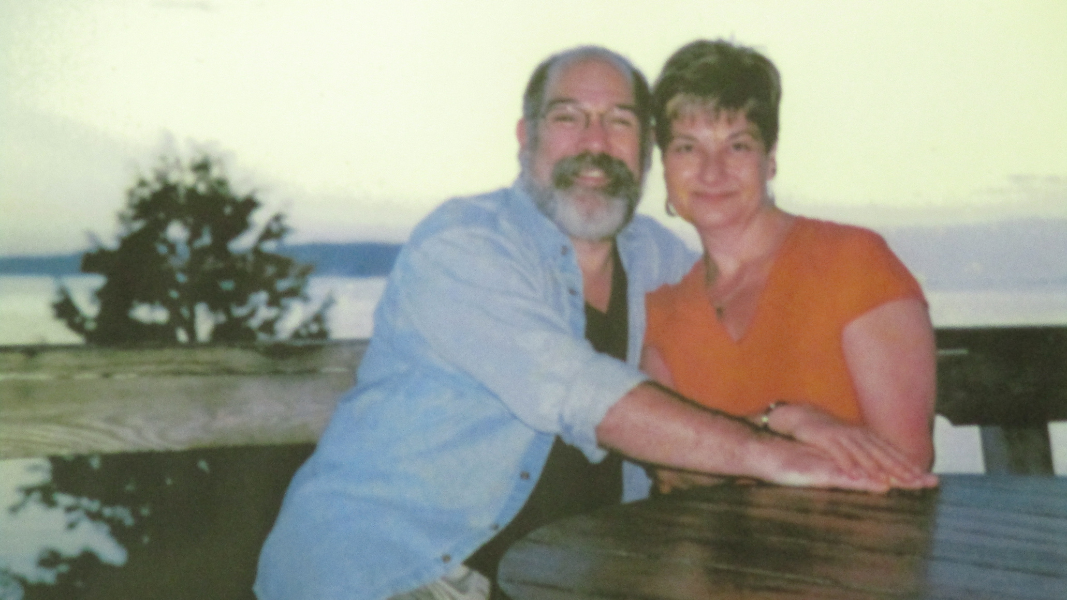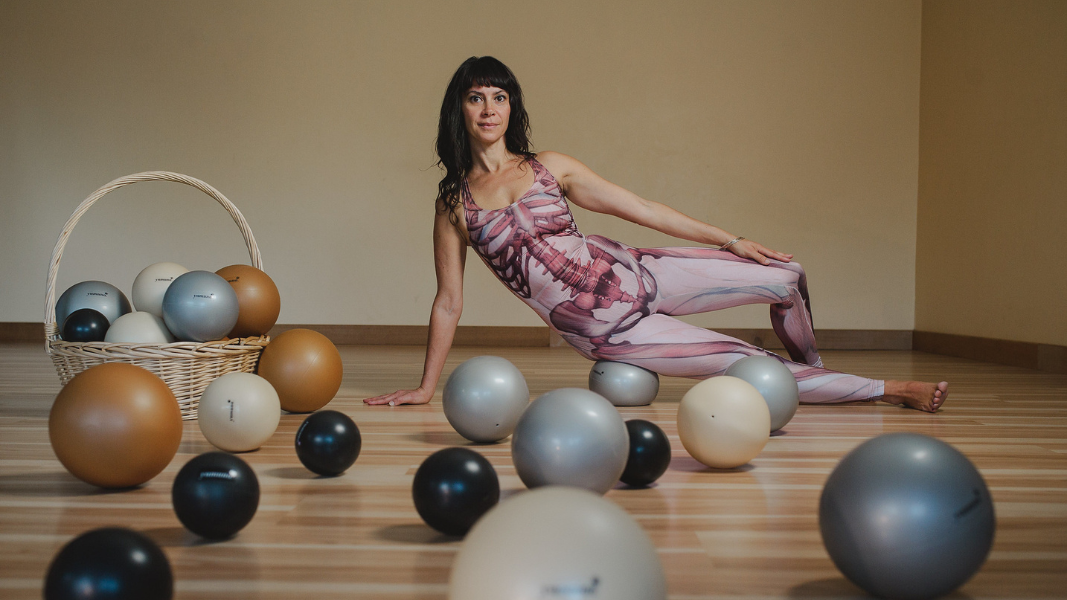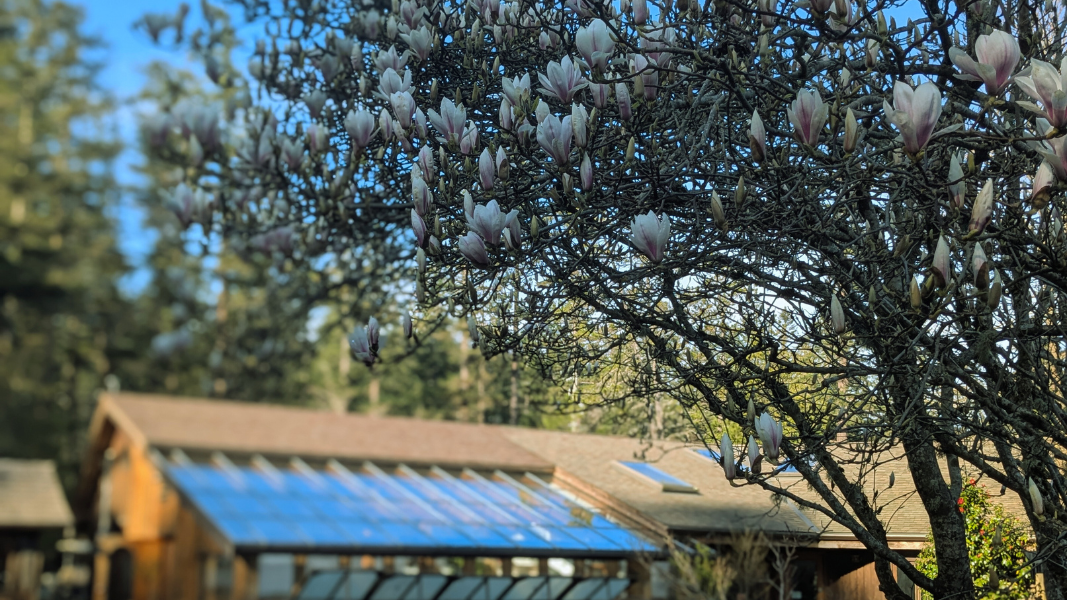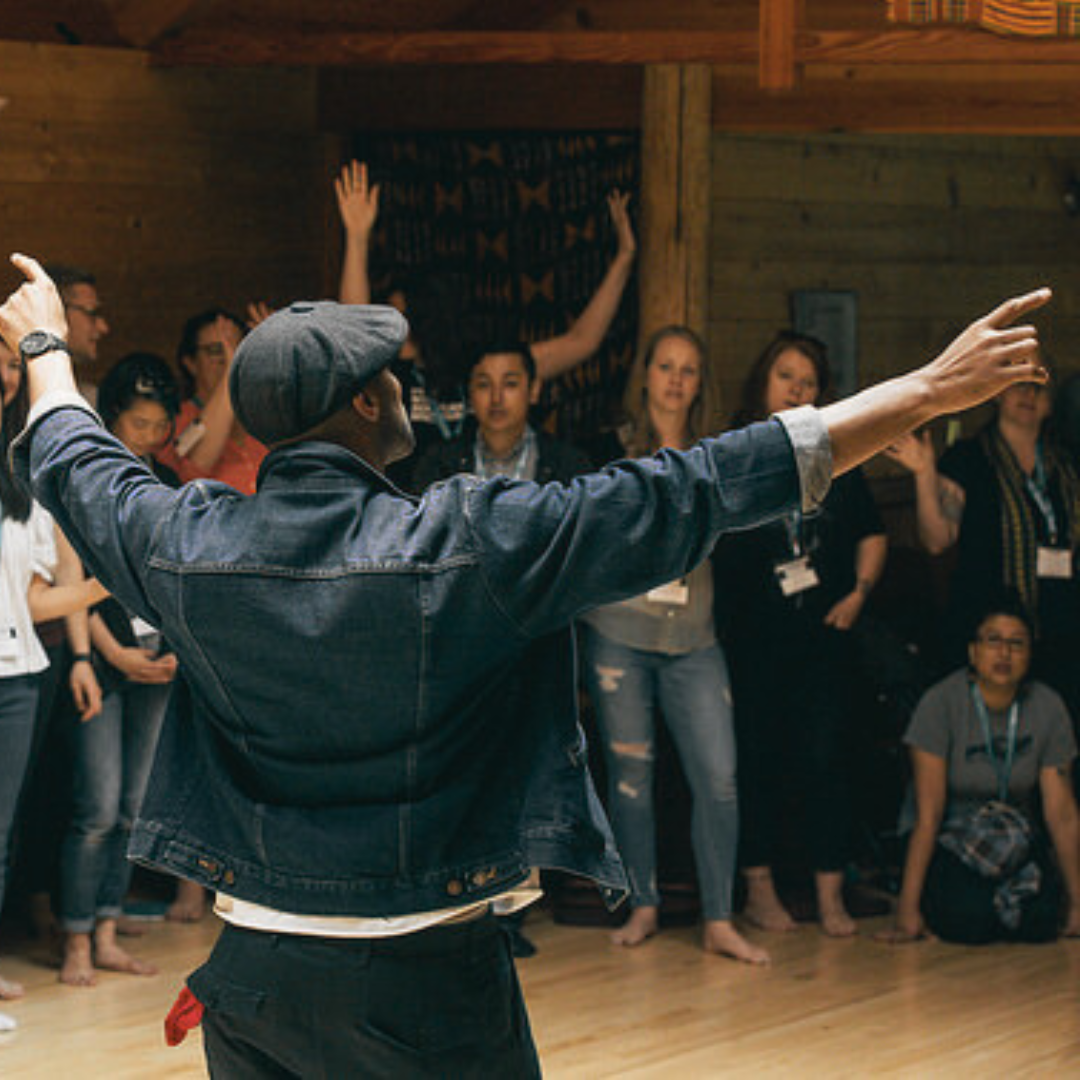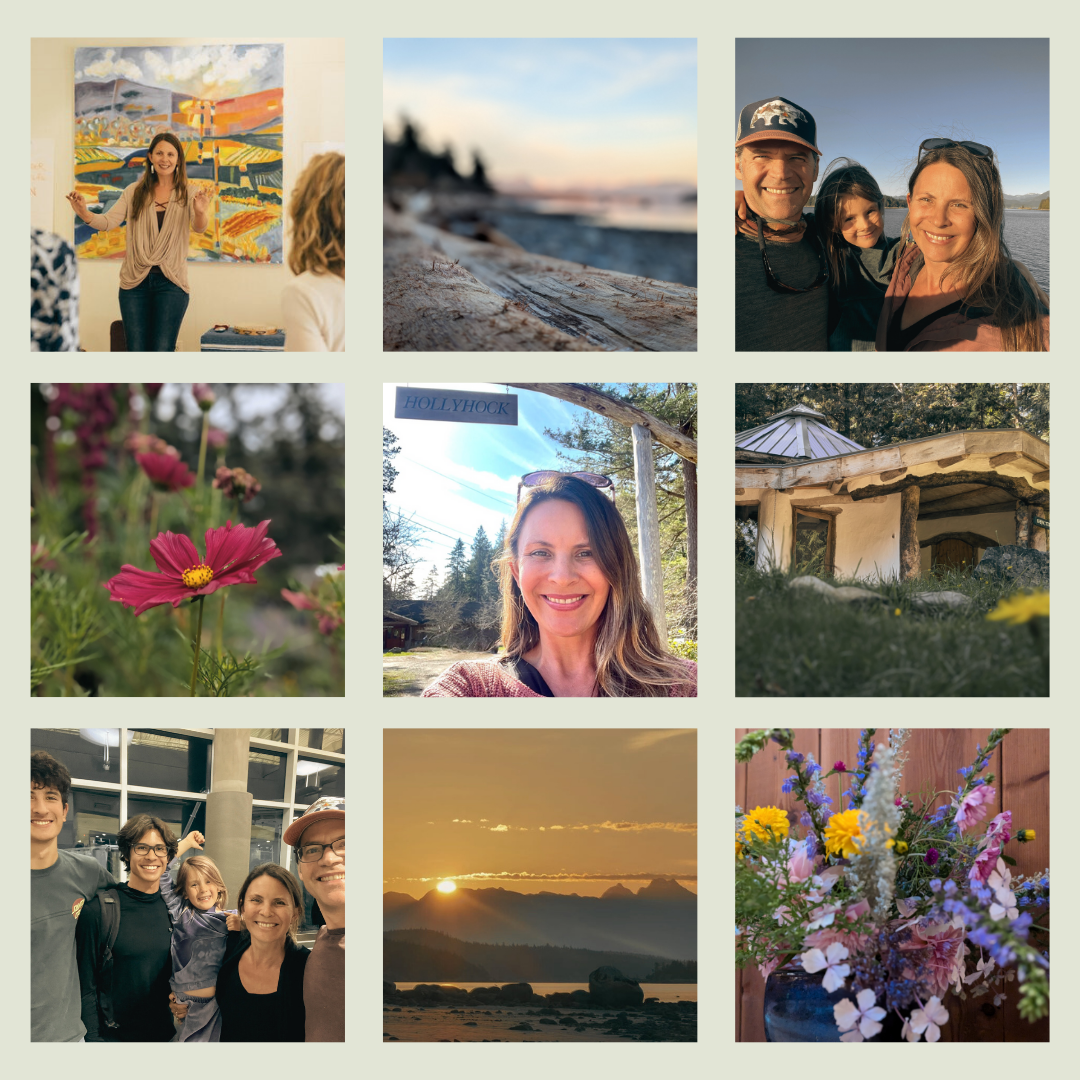When I stepped into the role of Manager of the Resident Service Program (volunteers) at Hollyhock last season, I soon realized that my job title could be “Manager of Possibility.”
Each individual arrives with some kind of expectation about what their Hollyhock volunteer experience will look like. Those who have visited Hollyhock as guests may hold a fantasy of an inexpensive month-long vacation spent lounging on the beach. Others imagine themselves stepping into the role of presenter, meeting their guru, or being struck by a spiritual lightning bolt to emerge glowing with heavenly light. It isn’t that intimate connections and epiphanies won’t happen—they can, and they very often do—but it is dangerous to be overly attached to such outcomes. It is my job to do what I can to help manage residents’ expectations, so that they can be free to step into boundless possibility.
Holistic centers by their nature draw nomads and spiritual seekers, and those who sign on as long-term volunteers are that and much more.
Creating possibility begins in the screening process. People will sometimes be so keen to enter the program that they will overestimate their capacity for manual labor, or be unaware of their own physical challenges. I am careful to communicate to an applicant that they will be scheduled for 30 hours of physical labor per week. They will wash dishes, scrub toilets, shuck oysters, and clear blackberry brambles in the drizzling rain. When a person isn’t accustomed to sustained physical labor, three hours in the dish pit can be daunting. There may be sore feet at the end of the day (please bring comfortable shoes!). When the initial dazzle wears off, it is not unusual for a new resident to come to me feeling like they might have bitten off more than they can chew, or that resident life is not squaring with their original expectations.
 When a resident comes to me with concerns, my foremost task is to hear them out and validate their experience. I encourage everyone to try to accept their challenges, but at the same time, not to be disappointed or feel shame if they fail to meet their own high standards—or, if their experience feels different from how they thought it would be. I encourage them to take a break and a few deep breaths, while suggesting that they reframe their experience by viewing it through the lens of childlike curiosity. The beautiful twist happens when a resident comes back after their next shift to report that it felt great to mop the lodge and make the floor shine, or that they never knew chopping vegetables could be so much fun! It’s all in the attitude and expectation. The floor shines all the brighter if we can learn to see the work itself as spiritual practice.
When a resident comes to me with concerns, my foremost task is to hear them out and validate their experience. I encourage everyone to try to accept their challenges, but at the same time, not to be disappointed or feel shame if they fail to meet their own high standards—or, if their experience feels different from how they thought it would be. I encourage them to take a break and a few deep breaths, while suggesting that they reframe their experience by viewing it through the lens of childlike curiosity. The beautiful twist happens when a resident comes back after their next shift to report that it felt great to mop the lodge and make the floor shine, or that they never knew chopping vegetables could be so much fun! It’s all in the attitude and expectation. The floor shines all the brighter if we can learn to see the work itself as spiritual practice.
 Holistic centers by their nature draw nomads and spiritual seekers, and those who sign on as long-term volunteers are that and much more. In order to have the freedom to do this work they usually live somewhat outside the average social profile. They must be free of responsibilities: from children, parents, jobs, property, even pets. They are students, retirees, travelers, artists, and teachers. They are seekers. They are often recently divorced, widowed, graduated, retired, or engaged in some other major life transition. This is great transformational material – however, transformation is not required for a rewarding experience. One young man told me his aspiration for his time at Hollyhock was to dive off a high cliff. He swam across the lake, jumped off the high rock, and left regarding his time here a complete success, with the intention to return for another session of residency. Simply showing up with the willingness to do your best is the reward in itself. With enthusiasm, I try to guide people to be themselves, to be open, and to observe what emerges. If a resident enters the program with the express goal of discovering their life’s purpose, more modest realizations can be short-changed. Lofty goals are likely to end in disappointment but achievable goals reap great rewards.
Holistic centers by their nature draw nomads and spiritual seekers, and those who sign on as long-term volunteers are that and much more. In order to have the freedom to do this work they usually live somewhat outside the average social profile. They must be free of responsibilities: from children, parents, jobs, property, even pets. They are students, retirees, travelers, artists, and teachers. They are seekers. They are often recently divorced, widowed, graduated, retired, or engaged in some other major life transition. This is great transformational material – however, transformation is not required for a rewarding experience. One young man told me his aspiration for his time at Hollyhock was to dive off a high cliff. He swam across the lake, jumped off the high rock, and left regarding his time here a complete success, with the intention to return for another session of residency. Simply showing up with the willingness to do your best is the reward in itself. With enthusiasm, I try to guide people to be themselves, to be open, and to observe what emerges. If a resident enters the program with the express goal of discovering their life’s purpose, more modest realizations can be short-changed. Lofty goals are likely to end in disappointment but achievable goals reap great rewards.
As part of our Resident Service Program, Hollyhock offers four hours per week of ‘personal growth and mindfulness practices’. This is an important piece to add depth to the individual’s inward journey, while at the same time strengthening group harmony and team-building. One weekly session is held in our lovely cob Sanctuary, where we usually begin with a brief sitting practice followed by a game, a sharing circle, or some other connecting activity. Participants may bring forward something from their own practice to offer to the group: a movement exercise, a song, a forest bath, a walking meditation. We finish with a movement session led by a Hollyhock yoga instructor. It’s light. It’s simple. It’s fun. As one participant said to me, “anything that makes me laugh is good medicine!”
 Our second weekly group session is a field trip, yippee! Sometimes Bill, our “Nature Guy” takes us on a forest hike, a morning row, or an intimate encounter with the creatures of the low-tide lagoon. (Have you ever held a live moon snail in your hand?) Or, we venture beyond the Hollyhock bubble to the fantastic free store, the museum, a community event, or a local permaculture farm. Outings are a great opportunity for Hollyhock to connect with the island community, and for residents to get a genuine taste of Cortes Island culture. I figure it’s not really an island experience if you don’t get to muddy your boots and ride in the back of a pickup truck. The healing power of fun works its magic, and as trust deepens in our weekly connection circles, I am humbled and uplifted by the courage each person brings to the adventure.
Our second weekly group session is a field trip, yippee! Sometimes Bill, our “Nature Guy” takes us on a forest hike, a morning row, or an intimate encounter with the creatures of the low-tide lagoon. (Have you ever held a live moon snail in your hand?) Or, we venture beyond the Hollyhock bubble to the fantastic free store, the museum, a community event, or a local permaculture farm. Outings are a great opportunity for Hollyhock to connect with the island community, and for residents to get a genuine taste of Cortes Island culture. I figure it’s not really an island experience if you don’t get to muddy your boots and ride in the back of a pickup truck. The healing power of fun works its magic, and as trust deepens in our weekly connection circles, I am humbled and uplifted by the courage each person brings to the adventure.
I figure it’s not really an island experience if you don’t get to muddy your boots and ride in the back of a pickup truck.
Hollyhock residents live together in a large pleasant house a short forest walk from the main campus, surrounded by fruit trees and sheep meadow. The house has seven bedrooms and when we have a full complement of volunteers they may sleep two to a room. Applicants may express confidence that they are comfortable living collectively, but the reality of sharing intimate space sometimes proves more challenging than they anticipated. Nevertheless, I am constantly impressed by how random groups of widely diverse strangers aged 18 to 80+ manage to work out their differences and find common ground. Lifelong friendships bloom around the fireplace and the evening jigsaw puzzle. Some of our resident cohorts keep in touch through the years and even stage regular reunions—but, that doesn’t need to be the outcome. The social environment of Hollyhock itself can be pretty intense, and at peak times it is easy to get over-socialized. I encourage residents to take plenty of self-care time away from the group, and nourish themselves in the precious silence and rich darkness of this thickly forested island. Each resident needs the space to let their experience develop without pre-determined boundaries. It is my job to help them to find that space to grow.
 The final possibility which I try to help manage is a resident’s expectation that they must walk away with a perfectly encapsulated outcome. Sometimes as soon as they arrive, residents begin to develop anxiety about what they will tell friends and family when they go home. They will begin to compose their travelogues and rehearse their stories before the stories have even happened! But practice is subtle, and the path is long. You may not fully realize what you learned in your month of service here for a week after it is over, or a month, or for years after you leave. Perhaps the story has no simple conclusion. One game we play is to literally rehearse saying “I don’t know.” What did you learn at Hollyhock? we ask one another. I don’t know. What was your take-away? I don’t know. How has it changed you? I don’t know. Replying, with a gentle smile. The purpose of the game is to relax, free the mind from rushing to premature conclusions, and make space for expansive possibility.
The final possibility which I try to help manage is a resident’s expectation that they must walk away with a perfectly encapsulated outcome. Sometimes as soon as they arrive, residents begin to develop anxiety about what they will tell friends and family when they go home. They will begin to compose their travelogues and rehearse their stories before the stories have even happened! But practice is subtle, and the path is long. You may not fully realize what you learned in your month of service here for a week after it is over, or a month, or for years after you leave. Perhaps the story has no simple conclusion. One game we play is to literally rehearse saying “I don’t know.” What did you learn at Hollyhock? we ask one another. I don’t know. What was your take-away? I don’t know. How has it changed you? I don’t know. Replying, with a gentle smile. The purpose of the game is to relax, free the mind from rushing to premature conclusions, and make space for expansive possibility.
This year we have changed the name of our program from “Volunteer Service Program” to “Resident Service Program.” This is a significant shift of perception. Whereas ‘volunteering’ can imply a vague and casual commitment, ‘residency’ carries a tone of responsibility and respect. A Resident is a trusted member of the Hollyhock staff team and an able resource for guests. The Resident has been screened and carefully selected for admission, and enters into a full program that includes, but is not limited to, work practice. The Resident pays a fee toward their living expenses but may apply for a scholarship based on financial need. It is our intention that evolving from a volunteer model to a residency model will help to re-shape expectations and open up new possibilities for our residents to grow, as well as to re-define Hollyhock’s expectations and possibilities in working with the resident body.
Dedicating time to service is among life’s most delightful and transformative experiences, and a Hollyhock residency is a pretty sweet gig. A volunteer who is realistic, curious, and open to the experiment is likely to look back on their time here with genuine gratitude and wonder. They will emerge inspired, and ready to share their remarkable gifts with the world.
Photo credit: Amanda McNaughton


